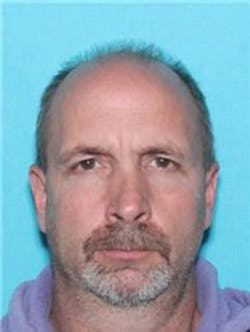How to Catch A Criminal: Killer Undone by Consequences of Guilt
What to Know
- Advancements in forensic DNA testing and genetic genealogy played a crucial role in identifying the suspect in the killing of a 15-year-old girl in Montana after over two decades.
- The case highlights the importance of persistence and technological progress in solving cold cases and delivering justice.
- The suspect, Paul Hutchinson, was identified posthumously after he committed suicide following a police interview.
More on OFFICER.com
Download the July/August issue of OFFICER Magazine.
Click Here to subscribe to OFFICER Magazine.
Every officer with a decent amount of time on the job knows the unexpected turns an investigation can take. Seeing a major case through to completion often involves giving up on a theory and taking your investigation in a different direction as new information becomes available. In How to Catch A Criminal, we look at the many ways not-so-perfect crimes are solved. This month, time finally catches up to a killer that got away.
The feeling of guilt is a powerful motivator. Ideally, the stress and discomfort that comes with doing something bad will compel a person to be honest and own up to what they’ve done. The consequences that come with being found guilty, however, can cause an individual to take drastic measures to avoid responsibility.
On the morning of September 21, 1996, 15-year-old Danielle Houchins set out for a hike after an argument at home. Thanks to growing up in Belgrade, Montana, Danielle was an avid hiker and outdoor enthusiast. She knew just where to go to clear her head and be alone. Sadly, she would never return home. As the day went on, her parents became nervous, and eventually requested the help of the Gallatin County Sheriff’s Office to help find her. The Houchins also enlisted the help of friends and family to expand the search to all of the hiking areas Danielle would frequent. Soon, her truck was located parked at the Cameron Bridge Fishing Access on the Gallatin River. This discovery helped narrow down the search area, but unfortunately it did not bring good news. Danielle was found deceased, face down in a shallow pool of water, not far from the truck. The Sheriff’s Office launched an investigation into the incident, and as is often the case when handling a major incident, the investigators kept their cards close to their vest. The Houchins family was informed of Danielle’s death and apparent drowning. What they weren’t initially told, however, was that Danielle’s body was covered in cuts and bruises, and there was clear evidence of sexual assault. Her lungs were also filled with water and mud, indicating there was a struggle, and she was intentionally drowned. This information was kept secret so that potential suspects wouldn’t know how much information the Sheriff’s Office actually had. As far as the public was concerned, Danielle simply drowned in a bizarre accident, despite her penchant for all manner of outdoor activities. Meanwhile, investigators took DNA samples from Danielle’s underwear and collected hairs found on her body to submit for forensic testing. Many suspects were interviewed, and rumors swirled around Belgrade about what really happened to Danielle. In order to preserve the investigation, the Sheriff’s Office stated there were no signs of foul play. This practice proved to be a bit problematic, because the Houchins family wasn’t told Danielle had been murdered until long after the case had gone cold.
Over the years, the evidence had been tested repeatedly, but there were no matches in the available databases of the time. In 2021, Dan Springer was elected the new Sheriff of Gallatin County and made it his goal to bring the Danielle Houchins case to a proper conclusion. The first step was to tell her family the full story. Over 20 years later, the Houchins were given the news that Danielle’s death was not an accident. She had been raped and murdered, and the case was no closer to being solved than it was in 1996. To get fresh eyes on the case, Sheriff Springer brought in seasoned investigator Tom Elfmont. Elfmont was a former Los Angeles Police Captain with a wealth of experience in cracking cases. He once again had the DNA evidence from the scene tested, but this time there was good news. Forensic testing had advanced to the point that the previously useless evidence now produced a partial profile. Though this profile didn’t match anything in the national CODIS database, new techniques proved fruitful.
Genetic genealogy is the practice of tracing familial connections through commonalities in DNA. Using this technique, a genealogist was able to test the hairs collected from Danielle’s body against genetic DNA databases and determine a particular bloodline for the suspect. From there, investigators were able to use social media to check out members of that particular family tree. Before long, they found a post stating one of the male family members had moved to Montana in the Summer of 1996, just before Danielle’s murder. That male’s name was Paul Hutchinson, and in 2024 he was officially named the prime suspect.
Hutchinson was a student of Montana State University in September 1996. He was an aspiring fisheries biologist and naturally would frequent local fishing areas. The circumstantial evidence was solid, but to close the case, Tom Elfmont knew he needed a proper DNA sample to connect Paul Hutchinson to the murder. Hutchinson had been living in the area and working for the Bureau of Land Management for more than 20 years. His time working as a biologist made him something of an expert of Montana waterways. Elfmont didn’t quite have enough for a DNA search warrant yet, but a statement from Hutchinson could seal the deal. On July 23, 2024, Elfmont asked to meet with Hutchinson because his knowledge of local rivers could be beneficial to a case. When they met, Elfmont brought along photos of unrelated murder victims, as well as photos of Danielle Houchins. Elfmont stretched the truth a bit and explained he was looking into these various cases of women killed near rivers, and asked if Hutchinson recognized any of the women or had heard of anything like this happening in the area. Hutchinson nervously admitted he was familiar with the Cameron Bridge Fishing Access, but swore he knew nothing about Danielle’s death. After squirming and sweating through the interview, Hutchinson got out of there as soon as he could. Elfmont tried to have him followed, but Hutchinson’s driving was too erratic. After speeding and driving in a nonsensical pattern, the investigators lost sight of him, but not for long.
Just a few hours after the meeting with Tom Elfmont, Paul Hutchinson called 911 and asked for help. When officers were able to locate him, they discovered he was dead from a self-inflicted gunshot wound. Posthumous DNA testing indicated Paul Hutchinson was undoubtedly the man who preyed upon Danielle Houchins in September 1996. It took 28 years, genetic genealogy, social media investigation, and a guilty conscience, but in the end, Danielle Houchins’ killer was identified, and he can never hurt anyone again.
About the Author

Officer Brendan Rodela, Contributing Editor
Brendan Rodela is a Sergeant for the Lincoln County (NM) Sheriff's Office. He holds a degree in Criminal Justice and is a certified instructor with specialized training in Domestic Violence and Interactions with Persons with Mental Impairments.

